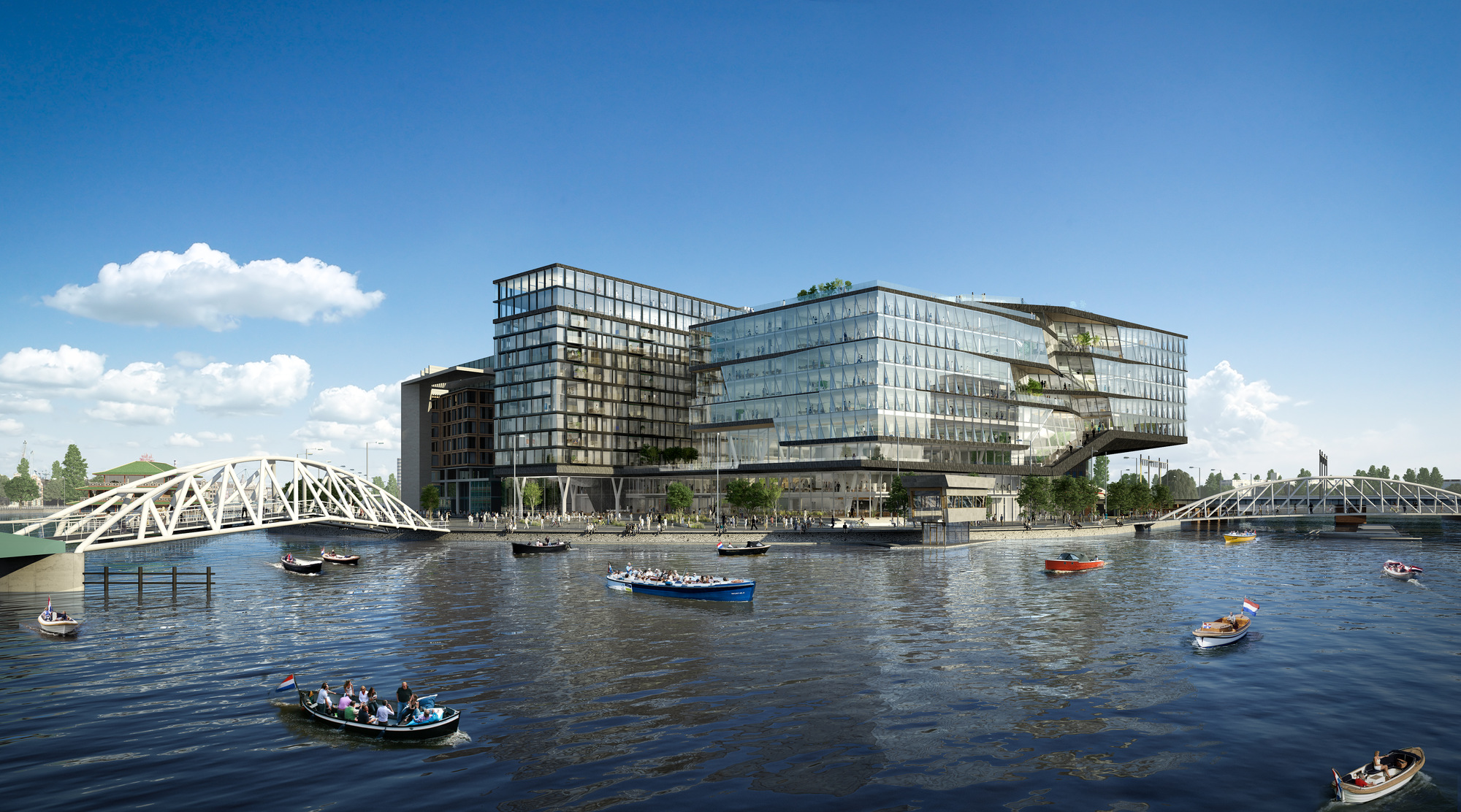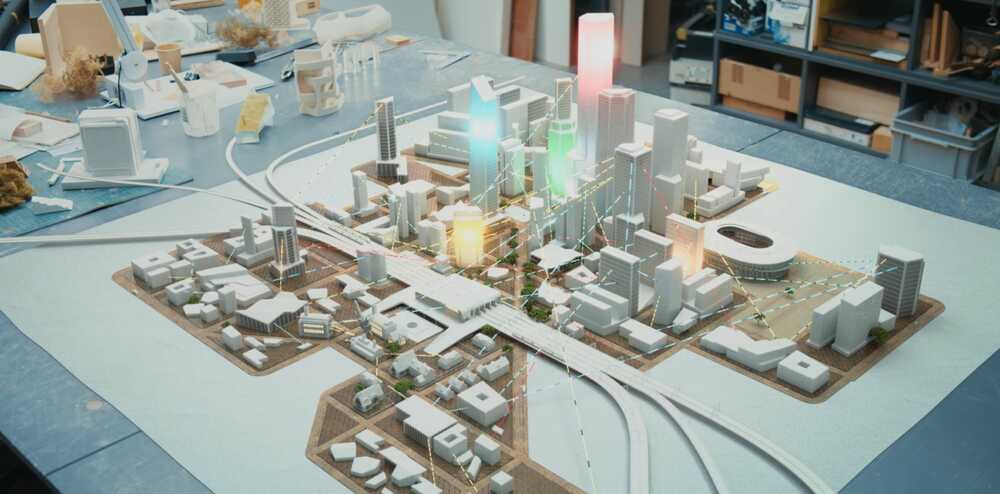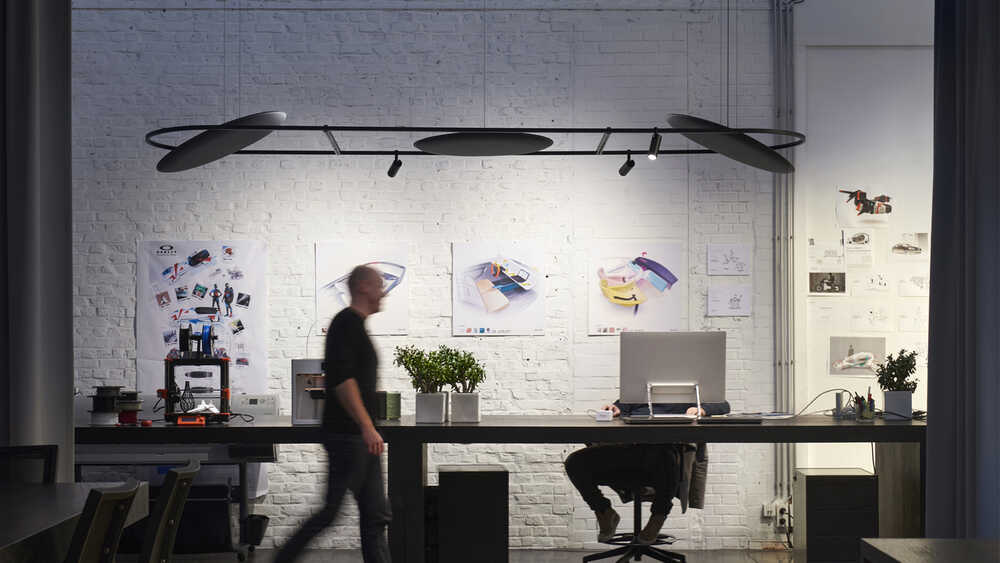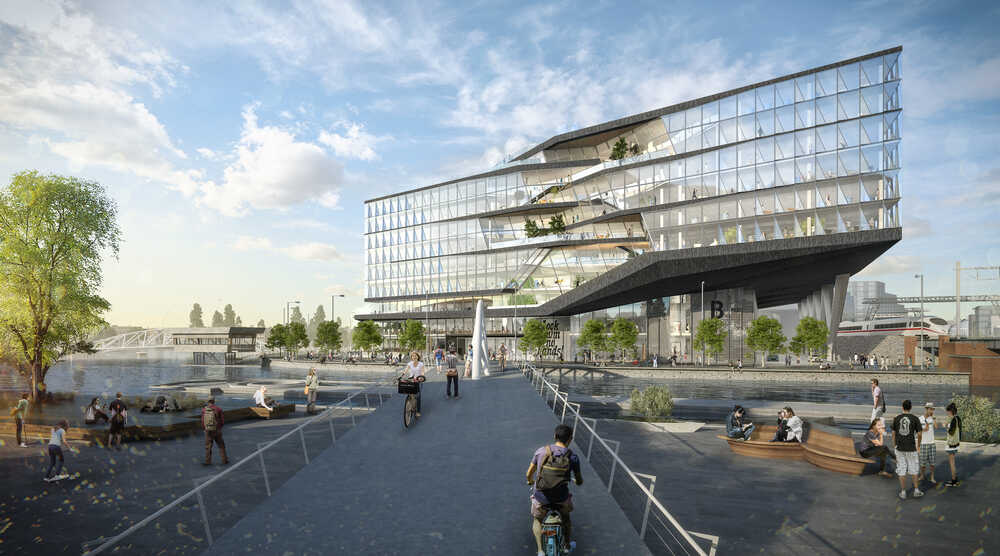How will Covid-19 transform our modern working life, and what does this mean for the future of offices?
In 2020, many of us saw our societies shift to a digital world practically overnight. For decades, our lives have been increasingly moving into the online realm, but the global pandemic has dramatically accelerated the transition towards a digital economy. Post-corona, society will continue on this path.
For the adult population, our work lives have been one of the most-affected sectors. Remote working is currently the norm in most white-collar industries, and many predict that the future of work will be a combination of remote setups and office-based time.
Many companies have also already announced their backing of a change in work patterns, with Twitter one of the first companies to proclaim that it would never expect staff to come back to the office full time. Such declarations may have been sparked by the sudden move to widespread home working, but they are not temporary. Even after vaccine programmes started to be rolled out, Unilever, one of the UK’s largest companies, also announced that its workers would never be expected to return to their office desks full-time.
In fact, only about one in 10 companies in the US expect all employees to return to their pre-pandemic work arrangements, according to a new survey by the National Association for Business Economics. Meanwhile in the UK, it is predicted that the amount of people regularly working from home will double from 18% pre-pandemic to 37% post-pandemic.
While this shift to hybrid working lives is seemingly abrupt, it was in fact a long time coming.
For decades, experts were questioning the benefits of the classic cubicle-style office space, and many companies have experimented with alternative working environments and patterns to try to create healthier and happier workplaces. From open office layouts to breakout spaces, hot-desking, co-working venues and shorter work weeks, the way we work was slowly changing.
While many wonder whether the pandemic marks the death of large corporate offices, we believe it actually presents an opportunity to reimagine these spaces and make our workplaces more dynamic than ever.
We are now heading into a new era of design, one heavily focused on the health and wellbeing of people and our planet. Looking specifically at workplaces, this will see a transition from designing for efficiency to a more holistic approach where inclusion, equity, resilience, sustainability - and most importantly health - are key drivers in the design.
How could this look in practice?


How Our Workplaces will Look, Post-Corona

Technology Will Be Core
“The post-COVID era will be shaped more definitively by technology than any other force in the global theatre today,” the World Economic Forum states in an article exploring how Covid-19 has disrupted the workplace.
For decades, our societies were already becoming more digitised, with advancements in cloud computing, artificial intelligence, 5G and big data propelling us further along the technological track in recent years. But while the digital revolution has already permeated most facets of our lives, the same cannot be said for within the built environment; the industry is still yet to extensively adopt the use of technology and data as a way to positively impact how we design and build.
It was for this reason that in 2018 we launched our sister arch tech company UNSense. Its mission is to explore how we can use technology as a design tool to improve quality of life in cities, creating places that are sustainable, humane and healthy.
UNSense’s current project, 100 Homes, which is part of the Brainport Smart District in the Netherlands, aims to result in the ‘smartest neighbourhood in the world’. It will effectively be a ‘living lab’, where new systems, processes and services are tested and residents play an active role in the development of their own community.
On another level, our UNSx unit, UNStudio’s in-house innovation think tank and experience lab, is also exploring how to apply technology to make renovating existing buildings a more sustainable process.
Through an EU-funded project called BIM-SPEED, our team is part of a consortium of companies researching how through building information modelling (BIM), in which a digital representation of a building is created, it could be possible to determine the smartest and most efficient ways to renovate existing structures.
With most of the existing building stock in the EU having reached the age for renovation, finding ways to update them in more sustainable ways is of crucial importance, particularly as the construction industry is one of the biggest contributors to carbon emissions in the world.
UNSense 100 Homes Project from UNStudio on Vimeo.
Tailored for Wellbeing
In 2015, the University of Twente and CBRE conducted an extensive study into the relationship between people's working environments and their health, wellbeing and ability to perform. Among their findings, they discovered that seemingly simple design features such as access to plant life and optimal lighting can significantly boost cognition, performance and spirits.
In relation to light alone, the study found that more than 70% of people felt more energised and happier as a result of good lighting in their office. When measured in terms of productivity, this translated to a 12% improvement in work performance.
Knowing the impact that environmental factors including light, sound, scent, air quality and temperature have on our health and wellbeing, offices of the future will incorporate smart technology that adjusts to the user’s ever-changing needs and activities.
One such example is Soliscape (sound and light-scape), a highly flexible lighting solution that is the result of a new collaboration between UNStudio and Delta Light. This innovative lighting and acoustic system uses sensors to determine the optimum conditions for the wellbeing of those using the space, thus digitally enhancing the interior environment to suit their needs.
Due to its adaptable configuration possibilities, the system can also be used in hotels, hospitality, retail and public spaces, and customised to best suit the daily needs and programming of each location.
This focus on wellbeing was also one of the main drivers behind our design for the new HQ campus for Czech software development company JetBrains, located in St Petersburg.
For this project, we applied a holistic approach to the design based on our years of research into optimal work environments and the positive impact these can have on the health, wellbeing, creativity and therefore, productivity.
As such, the central design element of the new JetBrains campus will be a grand atrium where all of the senses will be engaged. A striking element of this steeped indoor courtyard is the biophilic design, in which we have filled the space with nature and light, bringing the outside in.
Here in the heart of the campus, community will be fostered, communication encouraged, knowledge exchanged and creativity bolstered.

Mixed-Use Buildings
Aside from technological advancements, the flexibility of buildings will also be crucial for them to be able to withstand such global shocks as a pandemic. For office buildings to remain relevant and usable, they need to be multifunctional.
With many predicting that the future of office work will be a hybrid model, buildings that only serve a singular purpose as a place of work are fast becoming outdated.
Around the world, we have numerous constructions currently underway for mixed-use buildings that feature combinations of work, housing, culture, retail, hotel and education spaces, and that are flexible enough to be adapted to suit the changing needs of their users over time.
A prime example of this is the new Booking.com Headquarters in central Amsterdam, which is one of the largest urban projects in Western Europe. We designed the campus to be a lively environment where people can meet, inspire, live, work and play. The aim is to create a positive experience for all users: from the city’s residents who will use the public space and retail facilities, to the tenants who will live in the residential building and the young Booking.com workforce.
FOUR Frankfurt is another key exemplar. Located on the site of a former Deutsche Bank building, which had remained unused for 45 years, this major development will see a ‘City for All’ created in the heart of Frankfurt. The new vibrant urban quarter will bring together a healthy mix of work, living, relaxation and recreation, with large public spaces and incorporated subsidised housing.
At least 3,000 people are expected to work in the new neighbourhood, while about 1,000 people will live there. Apart from apartments and offices, the complex will also include catering, retail, hotels, local shops, a children's playground and adventure areas.

Redefined Cities
The potential permanent uptake of hybrid working models could also have a profound impact on how our cities function. This presents new opportunities to reimagine how our cities are designed.
According to the McKinsey Global Institute, more than 20% of the workforce could work remotely three to five days a week as effectively as they could if working from an office.
“If remote work took hold at that level, that would mean three to four times as many people working from home than before the pandemic and would have a profound impact on urban economies, transportation, and consumer spending, among other things,” its researchers said.
On an urban scale, such a change in work patterns can allow for central business districts to be transformed to accommodate more housing and cultural sites, and residential areas to be adapted to include more places to work.
It could also allow for ideas such as the ‘15-Minute City’ to really take hold. Developed by Professor Carlos Moreno at the Sorbonne in Paris, the concept, also known as the ‘polycentric city’, means a city of little villages. Within it, everything a person needs should be located within a 15-minute walk or cycle from your home, which would in theory reduce the density of city centres.
A hub-and-spoke model for offices is also emerging, with some large companies looking to spread their workforce across more locations. This approach would see them keep their HQ in urban centres, but have smaller hubs, likely in the form of co-working spaces, situated in the suburbs or in nearby cities to enable employees to work closer to home.
If the volume of office commutes is also cut down as a result of new working models and lifestyles, it also gives urban planners a prime opportunity to make our cities greener. With people travelling shorter distances and spending more time in their local area, some streets could be transformed into gardens and infrastructure for bikes and priority for pedestrians increased over cars.
With the transformation of our work lives, our cities and the buildings within them will also change, but for the better, with our physical and mental health, along with the health of the planet, being the driving force behind the current revolution in architecture and design.